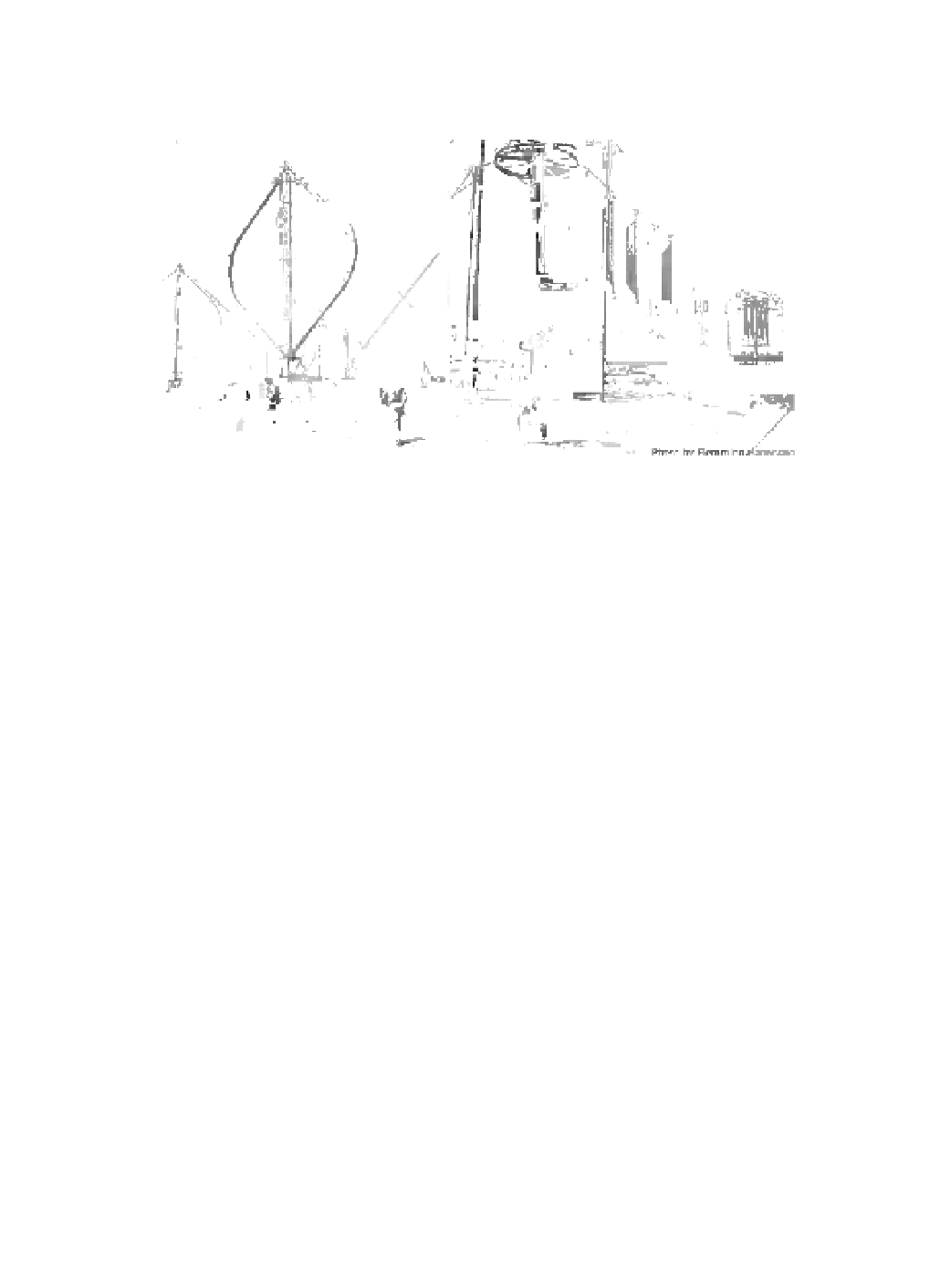Environmental Engineering Reference
In-Depth Information
electricity was produced. They were not able to start themselves.
Various design changes were attempted to improve their operation,
such as the use of glass fibre blades. But none of them succeeded.
Figure 23.3
American vertical-axis Flowind F-17 turbines rated at 170 kW
at Altamont Pass, 1985 (Photo: Preben Maegaard) (left); A
Transpower turbine installed in San Gorgonio Pass area, Palm
Springs, California. Note sail-wing blades, the wheels and the
drive train located on the ground in the foreground (Photo:
Flemming Hagensen) (right).
Probably the world's most unconventional approach to use
the power of wind was the one of Transpower and West Coast
Wind Power. These machines certainly worked with the power
of wind but not like any other wind turbine did. Instead of a 360°
revolution the Transpower machines had two “blades” tied to a
rope that was
supported by two wheels. The rope, pushed by the
wind
the blade, was revolving around a wheel that drove a
generator. The blade consisted of somewhat of a sail wing and led
one to think of a classical sailboat. Transpower built a 200 kW
and West Coast Wind Power a 150 kW model. For sure, these
“wind turbines” were underrepresented in the wind rush and
only a handful were built. They could be found in Tehachapi, San
Gorgonio and Salinas Valley.
The dramatic development that took place in the Golden State
might become more obvious when looking at numbers. While
there were “just” 150 machines installed in 1981, the state had
roughly 1 150 new turbines online in 1982 and some 2 400
via


Search WWH ::

Custom Search